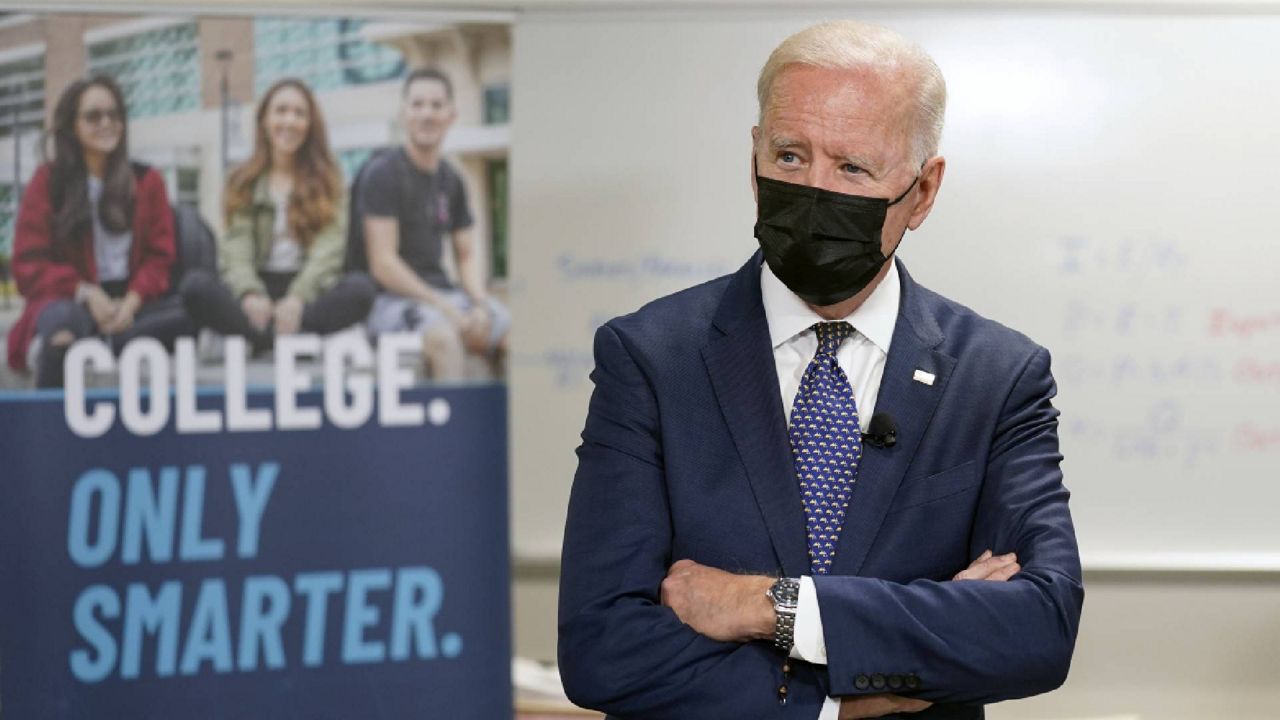As Biden administration officials pitch the president’s plan for free education – universal preschool and two years of community college — the price tag for the plan hinges on one key factor: that states are willing to buy in, too.
Both the pre-K and college proposals in the American Families Plan require states to shoulder some of the cost to make the programs truly free, and how much they’ll pay depends on the cost of education from place to place.
The federal government would pay 75% of the median cost of community college, for example, once the program is fully implemented. But for states whose average tuition is much higher than the national baseline, some will pay as much as 40 to 60% of the cost, instead of a quarter.
Experts worry that the need for states to opt in could create an uneven patchwork of benefits across the country.
“What the federal government is trying to do is increase access,” said Sandy Baum, a senior fellow for the Center on Education Data and Policy at the Urban Institute.
“We want everybody to have access to college and remove the financial barriers. But what we would be doing is spending a lot of money and accomplishing that only for some people, and people who live elsewhere wouldn't have that access.”
In Florida, for example, where community college costs an average of $3,238, according to a White House fact sheet, the state could end up paying just 25%, or about $810 per student, since tuition is lower than the national median of $4,540.
That share is closer to 40%, or $2,240 per student, for a state like New York, where two-year institutions average closer to $5,600.
For states where college is more expensive, the worry is that it will cost the state too much to get tuition down to zero.
“That would be another reason for states just to decide we can't afford to do this,” Baum said.
Asked whether states would opt in to the college and preschool programs, administration officials said they’re confident in support among governors despite the split over the bill on Capitol HIll.
“They have bipartisan support across the board, and it is something that we believe is really going to help,” White House Deputy Press Secretary Karine Jean-Pierre told Spectrum News in a briefing last week. “It's one of those, as I mentioned earlier, long-lasting kinds of investment that we need down the road.”
But the idea of a federal-state partnership for social programs has been tested before. There are still 12 states that haven’t bought in to the Medicaid expansion since the Supreme Court made it optional in 2012, resulting in varying benefits across the country.
The universal preschool program may encourage more states to participate, since the federal match starts at 90% and provides flexible coverage for three and four year-olds.
Federal grants would go to states, which would then pay places like schools, child care providers and Head Start.
“Those providers then would provide services free of cost to families, who can sign up for the program of their choice,” a White House official told Spectrum News.
Still, states would have to plan for their share to increase, since the administration’s payout would slowly decrease to 50% in the next ten years.
Dozens of states already subsidize both community college programs and preschool, and those contributions would factor in to the amount a state matches under the American Families Plan.
Overall, the federal-state payment plan could incentivize states to keep their community college tuition lower, Baum said. And if tuition is paid for with federal help, lower income students would get an extra leg up, since they can then use Pell grants and other aid for things like books, room and board.
President Biden’s overall proposal also includes a boost to those grants, increasing the maximum award to $1,400.
Governors in states like North Carolina and California have already expressed support for the social infrastructure plan, but each state will get to choose whether they opt in.
And with a tough road ahead on Capitol Hill, it’s unclear if the whole package, including the college and preschool ideas, would look the same when and if it gets through Congress.



